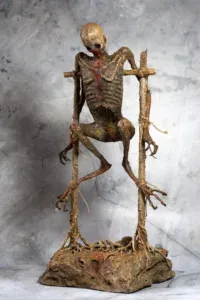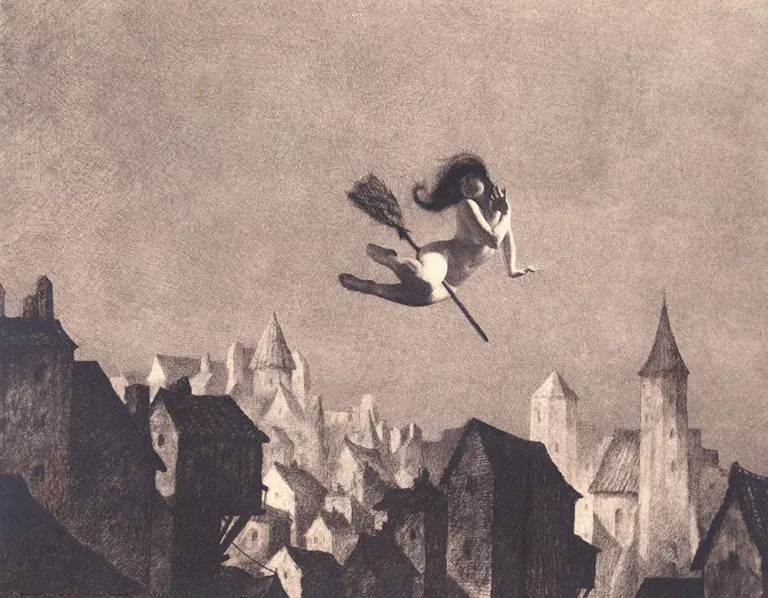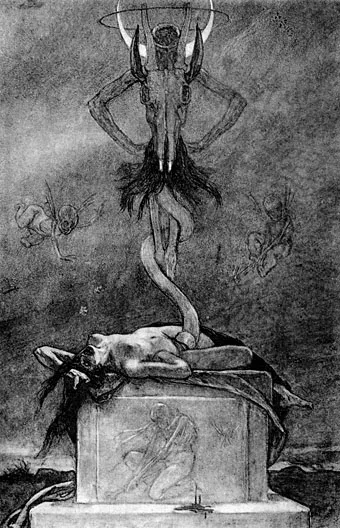The Horror Sculptures of Zdzisław Beksiński: A Journey into the Abyss
Zdzisław Beksiński, a name that evokes images of dreamlike worlds, desolate landscapes, and unsettling figures, is primarily known for his painting. However, his talent extended beyond the canvas. Beksiński was a multifaceted artist, whose exploration of horror and the surreal also extended into sculpture. His sculptures, while less known than his paintings, are equally fascinating and disturbing, offering another window into the darkness of his creative mind.
The Artist and His Vision
 Born in 1929 in Sanok, Poland, Beksiński spent much of his career exploring themes of death, decay, and existential anguish. Influenced by Gothic horror and apocalyptic visions, his works challenge viewers to confront the unknown and the unsettling. While his paintings are characterized by meticulous detail and spectral realism, his sculptures present a tangibility that makes them even more terrifying.
Born in 1929 in Sanok, Poland, Beksiński spent much of his career exploring themes of death, decay, and existential anguish. Influenced by Gothic horror and apocalyptic visions, his works challenge viewers to confront the unknown and the unsettling. While his paintings are characterized by meticulous detail and spectral realism, his sculptures present a tangibility that makes them even more terrifying.
Characteristics of the Sculptures
Beksiński’s sculptures are often made from simple materials like wood, metal, and plaster, but their visual impact is anything but modest. They depict contorted, deformed figures, often in states of suffering or despair. These works evoke a sense of primordial vulnerability and terror, seemingly coming straight from the artist’s deepest nightmares.
One distinctive feature of Beksiński’s sculptures is the attention to anatomical detail. Even though the figures are clearly non-human, the anatomy is often exaggerated to the point of seeming almost realistic, creating a disturbing and surreal effect. The figures appear trapped in a limbo between life and death, in a perpetual state of agony.
 Recurring Themes
Recurring Themes
Beksiński’s sculptures explore many of the same themes present in his paintings. Decay is a recurring theme, with figures appearing to deteriorate before the viewer’s eyes. This decay can be interpreted as a reflection on mortality and the fragility of the human condition. Additionally, many of his sculptures seem trapped or imprisoned, suggesting an existential struggle against invisible forces.
Another central theme is isolation. His figures are often alone, immersed in oppressive silence, which accentuates the sense of abandonment and desolation. This solitude can be seen as a representation of the human condition, an intrinsically solitary existence in an indifferent universe.
The Influence of Surrealism and Horror
Beksiński never sought to explain the meaning of his works, preferring to let the viewer draw their own conclusions. This approach is also reflected in his sculptures, which do not provide easy answers but rather provoke unsettling questions. The influence of surrealism is evident in the dreamlike nature of his creations, which seem to defy conventional logic and the laws of physics.
Horror is a fundamental element of Beksiński’s work, not just as a means to scare, but as a way to explore humanity’s deepest fears. His sculptures, with their graphic representation of pain and suffering, force the viewer to confront the darkest aspects of their own psyche.
 Reception and Legacy
Reception and Legacy
Although Beksiński’s sculptures are less known compared to his paintings, they have nonetheless made a significant impact in the art world. They have been exhibited in numerous shows and have attracted the attention of collectors and enthusiasts around the globe. Their ability to evoke deep emotions and stimulate reflections on the nature of human existence makes them works of great relevance and power.
Beksiński’s legacy lives on through his works, which continue to inspire and disturb new generations of artists and viewers. His sculptures, in particular, stand as a lasting testament to his unique vision and his ability to give tangible form to the darkest nightmares.
Conclusion
The horror sculptures of Zdzisław Beksiński are a journey into the abyss of the human psyche. Through his creations, Beksiński explored themes of death, suffering, and isolation, offering a haunting and profoundly moving vision of the human condition. Though less known than his paintings, his sculptures deserve special attention for their ability to capture the essence of horror and provoke deep reflection on our relationship with the unknown.
In the post “The Best Horror Sculptors in History” you can explore the fascinating world of horror sculpture and celebrate the extraordinary talents that have brought these unforgettable works to life… The Best Horror Sculptors in History.
Subscribe to our YouTube channel


 Recurring Themes
Recurring Themes Reception and Legacy
Reception and Legacy


